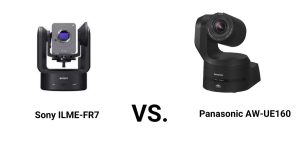The future of audiovisual technology is bright and shiny, just like the screens we stare at all day long. Whether it’s for work, play, or learning, we can’t get enough of audiovisual content that immerses us in new worlds and experiences.
But what are some of the trends and innovations that are shaping this field? Here are some examples:
– Augmented reality: This is when you use your smartphone or glasses to overlay digital information on top of your physical surroundings. For example, you can see directions on the street, try on clothes virtually, or play games with your friends. Augmented reality is great for enhancing your reality, but not so great for escaping it. If you want to forget about your problems, you might want to try something else.
– Virtual reality: This is when you use a headset or goggles to completely block out your physical surroundings and enter a simulated environment. For example, you can explore exotic places, fight zombies, or experience what it’s like to be someone else. Virtual reality is great for escaping your reality, but not so great for interacting with it. If you want to stay connected with your friends and family, you might want to try something else.
– Spatial audio: This is when you use headphones or speakers to create a realistic sound field that matches your visual environment. For example, you can hear sounds coming from different directions and distances, as if they were really there. Spatial audio is great for making your reality more immersive and realistic, but not so great for blocking out unwanted noises. If you want some peace and quiet, you might want to try something else.
– Streaming media: This is when you use the internet to access audiovisual content on demand from various platforms and devices. For example, you can watch movies and shows on Netflix or YouTube, listen to music on Spotify or Apple Music, or play games on Steam or Xbox Live. Streaming media is great for giving you more choices and convenience, but not so great for saving money and bandwidth. If you want to cut down on your bills and data usage, you might want to try something else.
As you can see, there are many ways that audiovisual technology can enrich our lives and entertain us in the future. But there are also some drawbacks and challenges that we need to be aware of like for example the average age inside the industry and the fast growing web 3.0 which makes it easier to implement certain features. And People are willing to get content fast and cheap. So financial challenges of keeping the financial stability is coming soon.
And remember last but not least: The future of audiovisual technology is what we make it.









